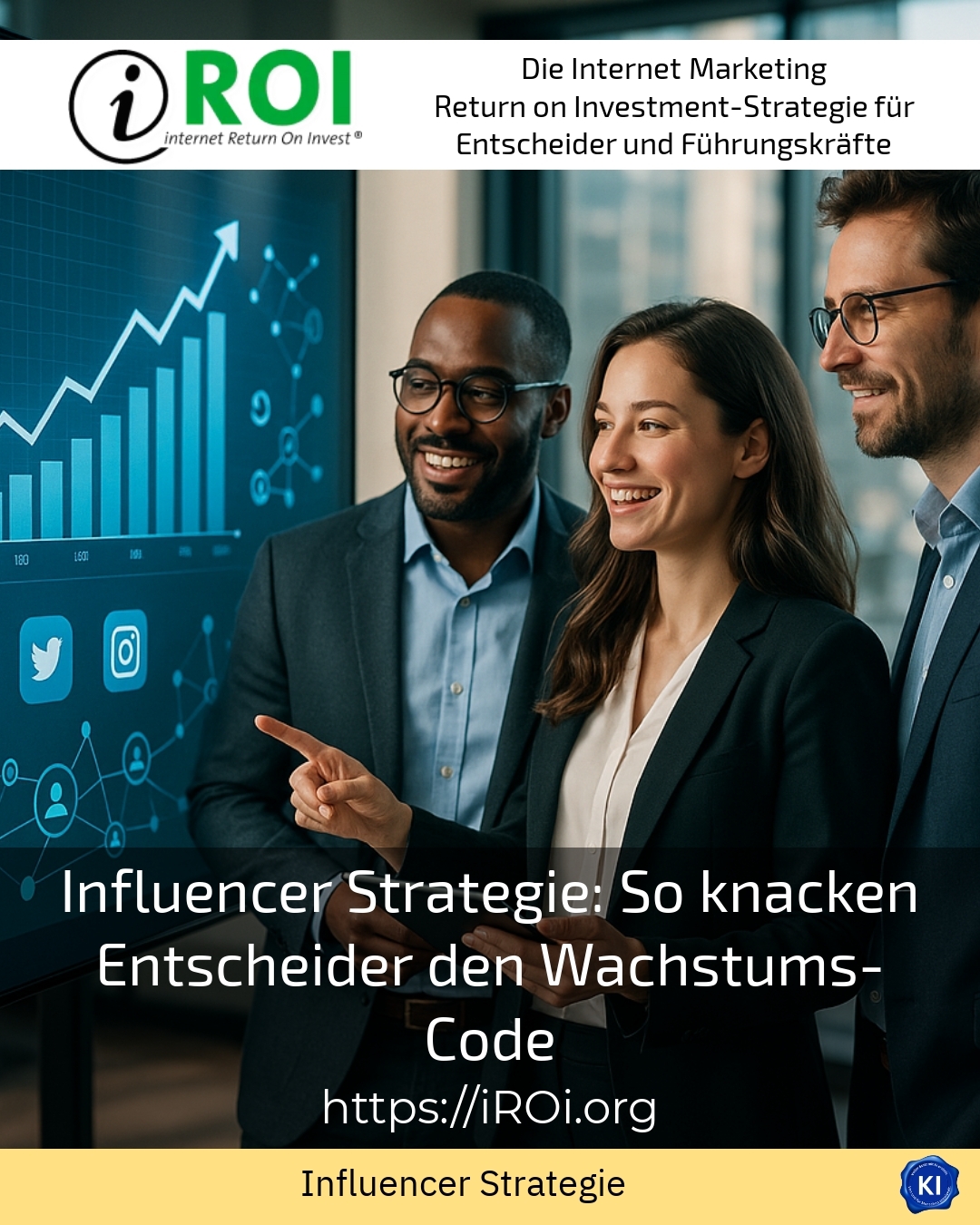More and more decision-makers are realising that a sustainable influencer strategy is the key to targeted growth in the digital age. Authentic recommendations from influencers often reach target groups much more directly than traditional advertising because they create trust and arouse emotions[7].
Why do we need an influencer strategy?
An influencer strategy is not a product of chance, but a data-based plan that clearly defines goals, target groups and tactics[7]. If you use influencer marketing without a plan, you will quickly lose the overview and the budget. Many customers report that they are unsure how to find the right influencers or which content really resonates with their target group. This is exactly where iROI coaching comes in: We support companies in developing an influencer strategy from analysis to implementation.
One example: a sustainable fashion brand wanted to target young adults and identified micro-influencers focussing on fair fashion. Through storytelling and curated campaigns, they were able to significantly increase brand awareness within a few months[1].
Central building blocks of an influencer strategy
A successful influencer strategy is based on several key elements. Firstly, clear goals must be formulated - such as increasing brand awareness, more leads or higher conversion rates[1][2]. Only those who know what they want to achieve can measure success and optimise it in a targeted manner.
The next step centres on target group analysis. Who are the people you want to reach? What interests, values and platforms are relevant to them? These questions are crucial in order to select suitable influencers that really fit the target group[1][9].
Another example: a start-up in the wellness sector specifically utilised nano-influencers with strong community ties for authentic product tests. This resulted in real testimonials that created trust and increased the conversion rate.
The right choice of influencers
Macro, micro or nano influencers - the choice depends on your goal and budget. Macro-influencers offer broad reach, while micro- and nano-influencers often deliver higher engagement rates and more authenticity[1]. One food brand deliberately focussed on local food bloggers with a small but very active community. The campaign achieved an above-average interaction rate and strengthened the brand's regional identity.
Campaign planning and creativity
A good influencer strategy thrives on creative, authentic content. Collaborating with influencers should always leave room for your own ideas, as this increases credibility[1]. One technology company shifted its focus from traditional product advertising to challenges and user-generated content. The content was not only shared on social media, but also used in other marketing channels.
BEST PRACTICE with one customer (name hidden due to NDA contract) A lifestyle company started a cooperation with several content creators who jointly launched a challenge. The participants posted their own ideas and creative contributions relating to the product. The campaign generated a great response, led to sustainable community growth and significantly increased sales. The collaboration with iROI-Coaching helped to plan the influencer strategy in a targeted manner, select suitable partners and measure success using clear KPIs.
Another example: a mobility provider relied on storytelling with micro-influencers who shared personal experiences with the product. The campaign increased brand awareness in the urban target group and led to a visible increase in website visits.
Measurement and optimisation
An influencer strategy depends on it being regularly reviewed and adjusted[1]. Tracking tools help to measure the performance of campaigns - for example in terms of reach, engagement or conversions. Only those who have access to data can make targeted adjustments and optimise collaboration with influencers.
A practical example: A company from the sustainability sector launched a campaign with several influencers and analysed the results on a weekly basis. This allowed them to quickly recognise which content was particularly well received and flexibly adapt the content strategy.
Growth through influencer strategy: how to get started
Many decision-makers are faced with the question of how to take the first step in their influencer strategy. The answer lies in clear planning: defining goals, analysing the target group, identifying suitable influencers, designing creative campaigns and measuring success. iROI coaching supports companies in going through this process in a structured manner and learning from mistakes.
Finally, an example from the consumer goods industry: a manufacturer of household products cooperated with several family influencers who documented everyday life with the products. The campaign was supported by an accompanying social media campaign and led to a considerable increase in brand awareness and greater customer loyalty.
My analysis
Today, an influencer strategy is not a luxury, but an effective growth lever for companies of all sizes. It makes it possible to address target groups in a targeted manner, build trust and achieve measurable results. Experience shows that companies that consistently implement an influencer strategy achieve sustainable improvements in reach, engagement and sales. It is crucial to pay attention not only to reach, but also to authenticity and target group fit. iROI-Coaching will be happy to accompany you on this path - from the analysis to the successful campaign.
Further links from the text above:
- Meltwater: How to create a successful influencer marketing strategy [1]
- Suxeedo: Influencer marketing strategy in 6 steps [2]
- Haufe: Influencer marketing - strategies and advantages [6]
For more information and if you have any questions, please contact Contact us or read more blog posts on the topic internet Return on Investment - Marketing here.
















